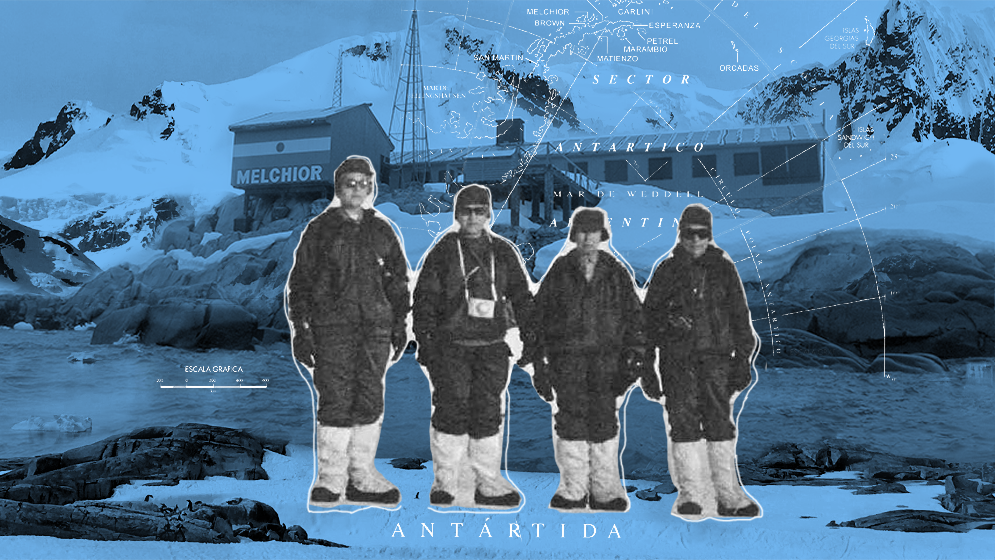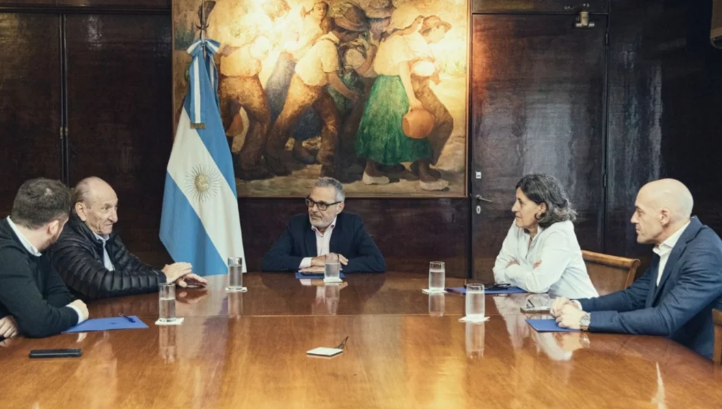In 1968, a landmark event in which four women named Irene Maria Bernasconi, María Adela Caría, Elena Dolores Martínez Fuentes, and Carmen Pujals participated, changed the history of Argentine science in Antarctica: they were the first women in the country to carry out a scientific expedition on the white. The continent. . “It was Melchior's Four that paved the way for many other scientists to be able to work there today. Both and we work at the museum,” says Laura de Capo, researcher at CONICET and deputy director of the Argentine Museum of Natural Sciences Bernardino Rivadavia (MACN). “We think it is very important to save her statue.”
Irene was an echinoderm specialist, María Adela was a bacteriologist, Lola was a marine invertebrate specialist, and Carmen was a physiologist. They studied seagrasses, siliceous sponges, stars, invertebrates, and sea urchins. They were nicknamed the Melchior Four, after the name of the Antarctic base where they stayed for two and a half months. “To get to know 'The Four of Melchior' better, we were greatly influenced by Maria Clara Echechori, a 101-year-old geologist who met them; he helped us a lot in piecing together their life stories. And so the cycle was born that ended up being named “Pioneers: Scientists of the Argentine Museum of Natural Sciences,” where they learn about women who have distinguished themselves in the various branches of science in our institution,” says de Capo. But who are the “Four of Melchior”?
Before traveling to Antarctica, Irene Bernasconi was a professor of natural sciences when one of her professors, who was responsible for the marine mollusk and invertebrate collections at MACN, called her to work with him on an honorary basis in 1921. Later, he obtained a position at the museum until the establishment of CONICET , in 1958, when he received another scholarship. In 1962 she became a researcher. Six years later, he traveled to Antarctica. Maria Adela Caría was among those who became CONICET researchers after a long journey. She worked in a chemical and biological products laboratory and later joined MACN to devote herself to her passion: studying intestinal bacteria. In 1957 he was part of the founding team of the Laboratory of Bacteriology at Ricardo Gutierrez Children's Hospital, searching for effective treatments for bacterial diseases such as Staphylococcus pneumoniae, childhood diarrhea, or urinary tract infections. Thanks to her scientific production during this period, she was able to join CONICET as a researcher in 1962, six years before she became one of the first four women to travel to Antarctica.
For her part, Elena Dolores Martinez Fontes was one of the “Melchior Four.” She was also a teacher at the Natural Sciences High School, and was passionate about teaching and science. He began working at the museum as an “extra assistant,” where he was always an outstanding performer. She devoted herself to organizing collections of single-celled organisms, produced educational guides on teaching biology, and joined CONICET in 1960 as a researcher. Another of Las Melchior's, Carmen Pujals, graduated in 1945 with a degree in natural sciences with a botanical orientation. He had a few other jobs until he joined MACN as a senior officer in the Marine Physiology Laboratory. He worked there for forty years. “The Four of Melchior” expedition to Antarctica was the first, but not the only, of which Carmen pioneered: in 1971 she became the first Argentine scientist to conduct field work in the Falkland Islands.
“These four scientists also defied age biases, let's keep in mind that Irene Bernasconi was 72 years old and led the expedition, and the rest were over 50 years old,” warns Giulia D'Angelo, a CONICET doctoral fellow at MACN. “His valuable works and contributions to science, especially during his historic expedition to Antarctica, deserve to be remembered and celebrated as an integral part of Argentina’s scientific history,” he says.
But beyond his legacy, nearly sixty years after Melchior Four's voyage to Antarctica, the scientific system had changed significantly. “I have been working at the museum for nearly forty years. I started on an honorary basis and then got a position and began my career within the museum. In the case of “The Four of Melchior”, as in many other stories, we saw what it was like to have a position at that time and many of them worked honorarily and could live that way; This is not possible now. “That's what distances us from them in the scientific system,” says Di Capo, who also points out that some were high school teachers and others taught at university, which was not common. “This also distances us from them, because the current scholars are all university graduates.” The third change can be seen in their biography: “They devoted their whole lives to research, they had no children, and now many of us, in addition to devoting ourselves to work, form a family. I think this is a good thing.” Permission that many of them – says Di Capo – cannot be given. Now, with a lot of effort, we can address both.
Five labs in bags and boxes
The “Melchior Four” voyage to Antarctica took place between November 7, 1968 and February 2, 1969. The science team traveled aboard the Navy cargo ship ARA Bahía Aguirre. They sailed from Buenos Aires and after crossing the Drake Passage, the ship arrived at the Melchior Naval Detachment on November 19, 1968. There, covered in snow, they lived through the two and a half months they remained in Antarctica. To carry out the work of collecting “Antarctic biota”, i.e. plants and animals found in the place.
“Carmen, 52, Elena, 53, María Adela, 56, and Irene, 72, took 5 mobile laboratories in bags and boxes,” says Laura Cruz, CONICET paleontologist at MACN. “We have nothing but admiration for these four women who have gone through many very important experiences and trips to different parts of the world (Malvinas Islands, Uruguay, France, the United States, etc.) to specialize in studying materials, consulting for exhibitions and conferences (both scientific and educational) until They arrive ready for Antarctica.
In the same year they returned from Antarctica, tributes to these four scientists began to come to life, which does not cease to this day: in October 1969, the American Women's Embassy honored them and presented them with a commemorative medal. Every member of the Antarctic Expedition, becoming the first women's group to participate in an Antarctic expedition to carry out scientific missions. In their honor, years later, four geographic features named after them and their titles were incorporated into the Argentine cartography of Antarctica.
“The legacy these women left in Antarctica goes beyond their scientific contribution; it also represents the fulfillment of your hard work,” asserts Giulia D’Angelo. Before embarking on their historic journey to the White Continent, they expressed in an interview: “We have wanted this all our lives.” This phrase sums up the determination and passion that drove his work, defying the restrictions of the time. “Her legacy lives on, and her courage and determination remain an inspiration to scientists today.”





